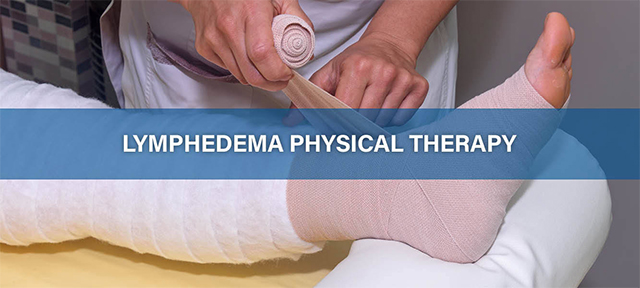Lymphedema occurs when there is an accumulation of lymph fluid in the tissues. This results in swelling, which most commonly occurs in the arms and legs. The symptoms of lymphedema can be painful, but fortunately there are things that reduce the discomfort. Lymphedema physical therapy treatment is effective, as there are various things a physical therapist can do to improve circulation and prevent further swelling.
Lymphedema Symptoms To Look Out For
People at highest risk of developing lymphedema are those who have had cancer treatments that have interfered with, or removed, lymph nodes. Those who currently have cancer may also have tumors that block the movement of lymph. Signs of lymphedema may not appear until months or years after cancer treatment has ended.
The symptoms of lymphedema can range from mild to severe. Common ones include:
- Swelling in a leg or arm
- Limited range of motion
- Feeling of tightness
- Thickening and hardening of the skin
In severe cases, lymphedema can lead to recurring infections of the skin or even sepsis.
How PT Can Help You Manage
If you have lymphedema symptoms that are decreasing your quality of life and making it difficult to move, it may be time to look for the best physical therapy in New Braunfels. Depending on your specific symptoms and situation, there are a number of things your physical therapist will assist you with.
Manual Drainage
One of the treatment therapies may be manual therapy to help move the accumulated lymph. Your therapist will use gentle and rhythmic movements to move the fluid and empty areas that are filled with lymph. This helps decrease swelling, reduce pain, and improve range of motion.
Compression Therapy
Another way to reduce swelling is compression therapy. The PT will strategically apply special types of bandages to the skin. These bandages provide resistance not only to the skin, but also to the underlying muscles. If you have swelling in your legs, your therapist may also recommend that you wear compression socks to prevent fluid from accumulating.
Exercises
One of the things your physical therapist is skilled in is how to incorporate movement to improve efficiency, increase range of motion, and reduce pain. There is a good chance your sessions will include exercises specifically designed to reduce your lymphedema symptoms.
When muscles contract, this helps move the lymphatic fluid. The PT will demonstrate and assist you in various exercises to improve your aerobic and strength abilities as well as balance and flexibility. Your therapist may also incorporate anti gravity treadmill physical therapy, as this treadmill reduces your body weight so it is easier to move. You may also be given exercises to do at home.
Lifestyle Modifications
Another way your physical therapist will help with your lymphedema is by suggesting modifications you can do at home and at work. These may include moving in different ways or using support systems to improve range of motion. Because you are more prone to skin infections, you will also learn how to minimize the chances of these occurring.
⚠ Article Disclaimer
The above article is sponsored content any opinions expressed in this article are those of the author and not necessarily reflect the views of CTN News





